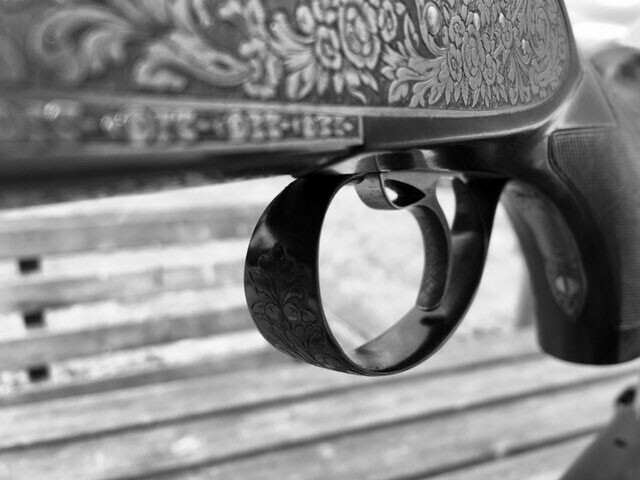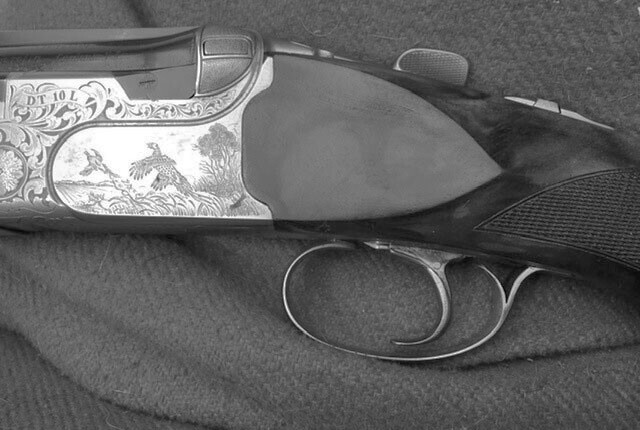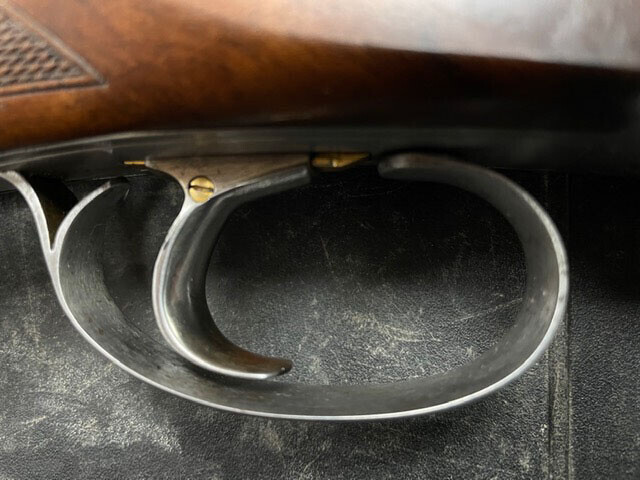Universal on all guns, yet rarely given much consideration, triggers can matter far more than you think. A legitimate part in fitting the whole shotgun, the appropriate trigger set up can convey a worthy advantage to your shooting.
There is a very good chance that you don’t give this part of your shotgun much thought at all.
You would have done in the beginning, as you were learning bit-by-bit — building and slowly consolidating shooting skill. Its operation is necessary for every shot, and addressing it is an essential factor in safe shooting.
Indeed, how you actually engage with this is a base-line essential to tapping into consistency, and therefore sustained success, in all shooting. And then pretty much once competence is achieved you contrive to forget all about it!
We might variously conclude that you are happy and content. Or that you’re okay with what you’ve got. Or in what you have already there’s a weary acceptance that you must simply put up and shut up.
This is a discussion about shotgun triggers and what we are able to do in order to get the very best from them. And you know there’s a whole lot more to triggers than just making the gun go BANG!
Often neglected, triggers are a legitimate and necessary part of the gun-fitting process.
In the fitting of factory made shotguns, triggers matter a lot and, often, much can be done to tune them better to their shooting function.
When custom-built guns are considered, the door to perfection stands wide open. And yet trigger potential is regularly overlooked even here.
Under our definition of whole-gun-fitting wherever there is physical contact with a shotgun there is corresponding opportunity to fit better. Trigger shape, texture, pitch and pull-weights are all therefore factors in gunfitting.
Peripherals to triggers matter too: the physical dimensions of the hand and grip of your stock.
Those stock components function to ‘fix’ the rear hand to a comfortable, responsive and repeatable ‘index’. This sets the forefinger toward locating the trigger with zero effort, progressing trigger function and making a shot.
Pad or Joint: Which?
The competent gun fitter pays a good deal of attention to where the forefinger sits on the trigger.
Does the trigger locate naturally to the pad of the fingertip or the actual line of the finger-joint?
Triggers – off the shoulder techniques:
More active ('gun down') mounting techniques tend toward favour in straighter, longer, less concave trigger profiles. The pad of the forefinger falls to the trigger quite instinctively with no hesitation.
Typical in game shooting and to dedicated game-guns, here the finger comes to the trigger relatively late in the shot process. Good triggers have identifiable pitch: angled right or left (a 'twist' to their line in favour of 'handedness').
Best triggers often have an inclined 'point' to the leading edge of the trigger when viewed in cross-section. Rounded and purposely smoothed, this feature is receptive to the 'landing' of the finger to the trigger just before it is pulled.
Triggers – on (or at) the shoulder techniques:
Less active ‘gun-up’ (or ‘soft’) mounting techniques lean advantageously toward more concave, broader trigger shapes with little or no pitch: the finger locates to the trigger earlier in the shot process and inclines toward the finger-joint.
Here triggers can be flatter in cross-section — maximising available surface area and thereby contact with the trigger. A textured finish in terms of vertical ridging or cross-hatching to the trigger surface serves to best facilitate supreme trigger control.
In competition shooting, it must be said, many now place their finger to the trigger before the target is called. The antithesis of safe handling in field shooting, yet nonetheless a 'fact-of-life' adaptation in competition shooting that now attracts a widespread tolerance.
Trigger Work
The ‘tricking’, ‘honing’ and overall ‘tuning,’ of a shotgun’s trigger was at one time very common. For those who appreciate and demand the best from their shotgun triggers, this work is a must have aid to high-level performance in field and competition shooting alike.
Skilled gunsmiths are able to ‘fettle’ shotgun triggers to excellent levels of performance: banishing trigger creep, regulating for (safe) optimal pull-weight, shaping, profiling, pitching and texturing to perfection.
The Custom Trigger
The trigger in the image below was made and finished by Gunsmiths at J.M. MacAdam & Co. Fitted to a Beretta DT10 for the all round good shot Andy Cox.
Regulated to break at three-and-a-half pounds at each pull precisely, the trigger is shaped and profiled to enable ultimate performance.
Prior to this work, a good deal of recoil vibration was felt to the finger through the lower portion of the trigger. The angled, deep trigger blade is specially aligned and shaped to the finger; smooth polished, with elongated right hand pitch and the accentuated bottom ‘spur’ supports and guides the trigger finger efficiently.
This custom-trigger provided an excellent solution and contributed to a great man’s sublime shooting gift.
[Always, but always] “Crack on.” Andrew Iain Cox 1977-2021: Our ‘Coxie’.
Enjoyed this post and want to know more?
Why not contact us at Glenzier Sporting. Mike Smith has run the Whithorn shooting ground for 20 years and offers teaching lessons and gun fitting.





